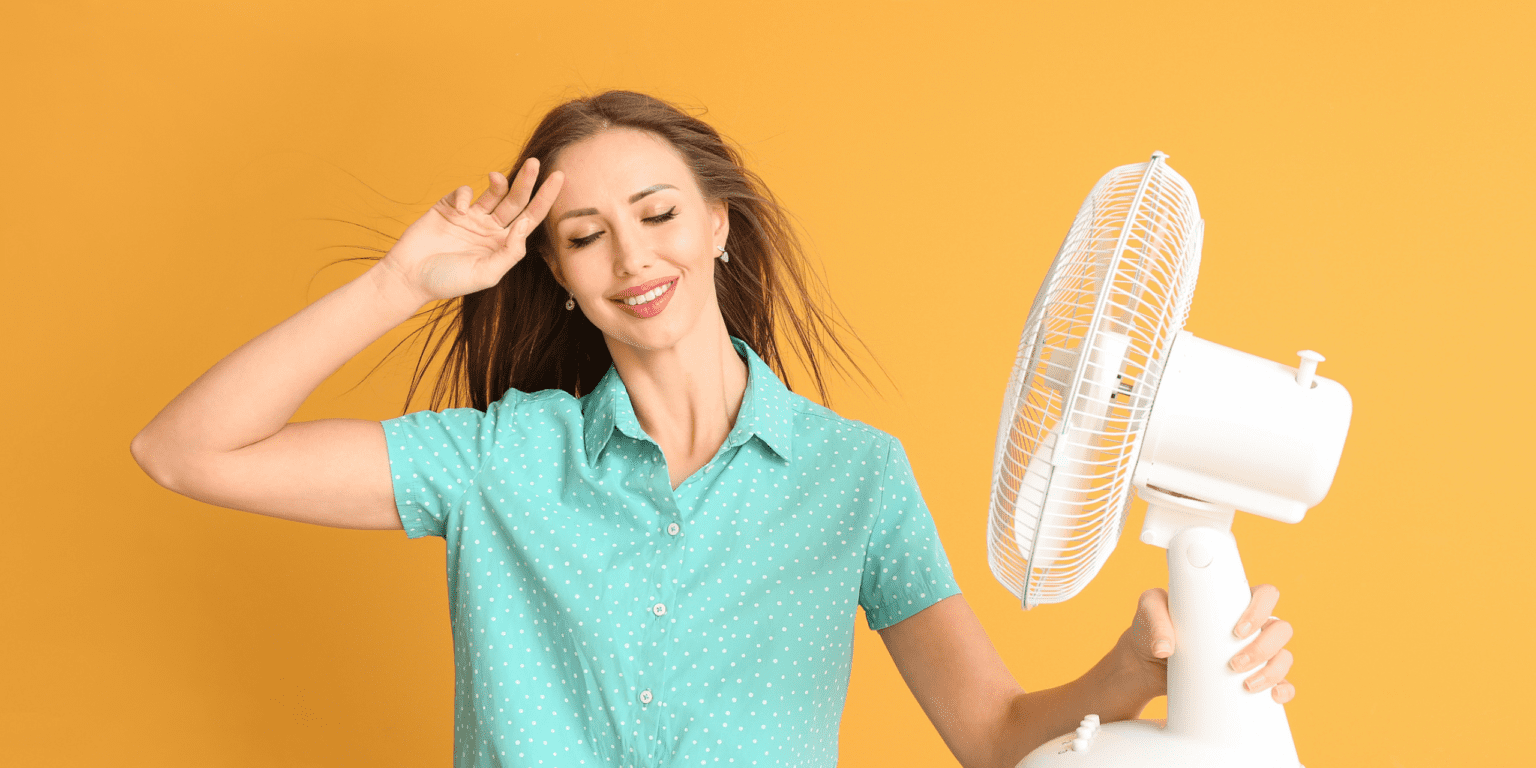Menopause can bring a variety of challenges, with hot flashes being one of the most common. During this stage, hormonal changes in your body can lead to sudden feelings of warmth and excessive sweating. Choosing the right menopause clothing is essential to help you stay cool and comfortable as you navigate these changes.
Finding cooling clothing specifically designed for menopause can make a significant difference in your daily comfort. Lightweight fabrics that wick moisture away from your skin are ideal for managing hot flashes. Incorporating breathable styles into your wardrobe can help you feel more at ease, allowing you to focus on embracing this natural phase of life without discomfort overshadowing your experience.
In addition to finding the right clothing, making some lifestyle changes can also aid in managing hot flashes. Staying hydrated, avoiding triggers like caffeine or spicy foods, and incorporating relaxation techniques can work together with your choice of clothing to help keep you cool throughout the day. Embracing these adjustments can lead to a more comfortable menopause journey.
Understanding Menopause and Hot Flashes
Menopause is a natural transition that can bring a variety of symptoms, with hot flashes being one of the most common. Understanding the science behind hot flashes and how lifestyle factors contribute can help you manage this time in your life better.
The Science of Menopausal Hot Flashes
Hot flashes are sudden feelings of warmth, often accompanied by sweating and discomfort. They occur due to changes in estrogen levels, which impact the hypothalamus—the part of your brain that regulates body temperature.
As estrogen decreases during menopause, the hypothalamus may misinterpret body temperature signals. This leads to an inappropriate response, causing blood vessels to dilate and creating a flush of heat. Episodes usually last from 1 to 5 minutes but can vary in intensity.
Understanding this process can help you identify when a hot flash might occur and prepare for it.
Hormonal Imbalance and Body Temperature
Hormonal imbalance plays a key role in hot flashes. Lower estrogen levels lead to mood changes like anxiety and irritability, compounding the discomfort of hot flashes.
This imbalance affects your body’s natural thermostat, resulting in more frequent and intense episodes. Some women may experience other symptoms, such as sleep disturbances or weight gain, which can also be linked to hormonal changes.
Addressing hormonal imbalances through healthcare provider guidance, including hormone therapy if needed, can improve your comfort during this transition.
Lifestyle Factors Affecting Menopause
Your lifestyle can influence the severity and frequency of hot flashes. Activities such as smoking and excessive alcohol consumption can worsen symptoms.
Maintaining a healthy weight is also important, as weight gain can increase the intensity of hot flashes.
- Stay hydrated to help manage body temperature.
- Dress in layers to adapt to temperature changes.
- Implement stress-reduction techniques like yoga or meditation to lower anxiety levels.
Making these adjustments can lead to a more comfortable experience during menopause.
Clothing Materials for Menopause
Choosing the right clothing materials can greatly affect comfort during menopause. Your skin deserves breathable, moisture-wicking fabrics that help regulate temperature and keep you cool.
Benefits of Natural Fabrics
Natural fabrics like cotton, linen, and bamboo are often the best choices for menopause clothing. Cotton is soft, breathable, and absorbs moisture, making it a top pick for everyday wear. Organic cotton is even better, as it eliminates harmful chemicals used in production.
Linen is another excellent option. It is lightweight and allows air to flow freely, helping you stay cool. Bamboo fabric is soft and has natural moisture-wicking properties to keep you dry. These fabrics also tend to be gentle on your skin, reducing irritation during hot flashes.
Comparing Synthetic and Natural Options
While synthetic fabrics like polyester can offer durability and stretch, they often trap heat and moisture. This can worsen discomfort during menopause. If you prefer synthetic options, look for clothing that incorporates moisture-wicking technology designed to help regulate temperature.
Natural fabrics generally outperform synthetic ones when it comes to breathability. They allow your skin to “breathe” and help manage sweat better. Always check labels for fabric blends since some items may combine both types. Understanding these differences can help you make informed choices for your comfort.
Embracing Innovative Fabrics
Some brands offer innovative fabrics made specifically for menopause. These include moisture-wicking and temperature-regulating materials designed to combat hot flashes. For example, clothing featuring anti-flush technology helps wick away sweat and cool you down.
Thermocules™ used in some products encapsulate temperature-regulating materials to enhance comfort. Look for features like these when shopping. Innovative shirts, pants, and sleepwear can make a significant difference in how you feel. Prioritizing these advanced materials can offer relief and improve your daily experience.
Cooling Clothing Design
Cooling clothing is specially made to help you stay comfortable during menopause and its associated hot flashes. These clothes often have features that allow for better airflow, moisture control, and temperature regulation. Understanding the specific features and styling strategies can enhance your comfort significantly.
Functional Features of Cooling Clothes
When choosing cooling clothing, look for specific functional features. Many brands incorporate moisture-wicking fabrics. These materials draw sweat away from your skin, helping you feel dryer.
Also, pay attention to breathability, which allows air to circulate freely. Loose clothing helps with this, as it prevents fabric from clinging to your skin.
Some options include cooling bandanas and cooling towels. These are designed to absorb heat and provide relief when worn around your neck or forehead.
Anti-Flush technology is another innovation. It helps regulate your body temperature, cooling you down after a hot flash. With these features, you can choose clothes that help you manage symptoms effectively.
Dressing in Layers for Temperature Control
Dressing in layers is an effective strategy to manage body temperature. Start with a lightweight base layer made from breathable fabric. This helps wick moisture away from your skin.
Next, add a loose-fitting top. This layer allows for airflow, which can be crucial during warm moments. Consider outer layers that are easy to remove—like a cardigan or light jacket—when the temperature rises.
Accessories can also play a key role. A cooling towel can be draped around your neck for added relief. Stylish cooling bandanas can serve both fashion and function.
Layering not only provides temperature control but also allows you to adapt to temperature changes throughout the day. This flexibility can significantly enhance your comfort during menopause.
Specialized Menopause Clothing Items
There are specific clothing options designed to help you manage the discomforts of menopause, especially hot flashes. These items aim to keep you comfortable both at night and during the day while also providing cooling solutions.
Menopause Sleepwear Options
Choosing the right sleepwear is crucial for a good night’s rest during menopause. Look for pajamas made from breathable fabrics like cotton or specialized cooling materials. Brands such as Become™ offer sleepwear with Anti-Flush™ Technology that helps regulate body temperature.
Consider items with loose fits to enhance airflow, which reduces the risk of overheating. You might also explore cooling pillows that adapt to your body temperature, ensuring comfort throughout the night. Thermal wristbands are another option; they provide extra cooling by regulating blood flow in your wrists.
Daytime Cooling Apparel
During the day, you need clothing that helps you stay cool and comfortable. Lightweight fabrics like linen or moisture-wicking materials are ideal for this purpose. Fifty One Apparel features stylish options that use NASA-developed technology to help prevent hot flashes before they start.
Opt for tops and dresses that are loose-fitting to allow better air circulation. Layering is also effective; choose a breathable tank top and add a lightweight cardigan. Accessories like cooling scarves can be beneficial as they can be dampened for added relief when needed.
Hot Girls Pearls and Other Accessories
In addition to clothing, accessories can help you manage symptoms. Hot Girls Pearls are a popular choice. These pearl necklaces are designed to help balance your body temperature. Simply hold or wear them for a soothing effect.
Consider thermal wristbands for a discreet solution that you can wear throughout the day. These wristbands can provide cooling relief while maintaining an active lifestyle. Incorporating these items into your routine can enhance comfort significantly.
Menopause can be a challenging time, but finding the right clothing and making small lifestyle changes can greatly improve your comfort and confidence. By choosing breathable fabrics, layering strategically, and exploring innovative cooling options, you can manage hot flashes more effectively. Remember, menopause is a natural phase of life, and with the right tools and mindset, you can navigate it with grace and ease. Embrace this opportunity to prioritize your well-being and feel empowered in every step of your journey.









